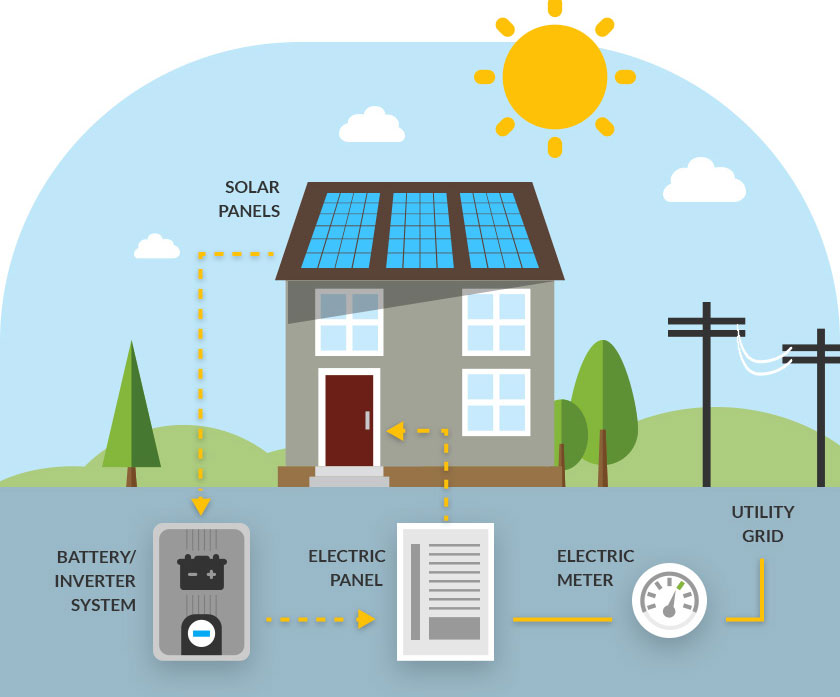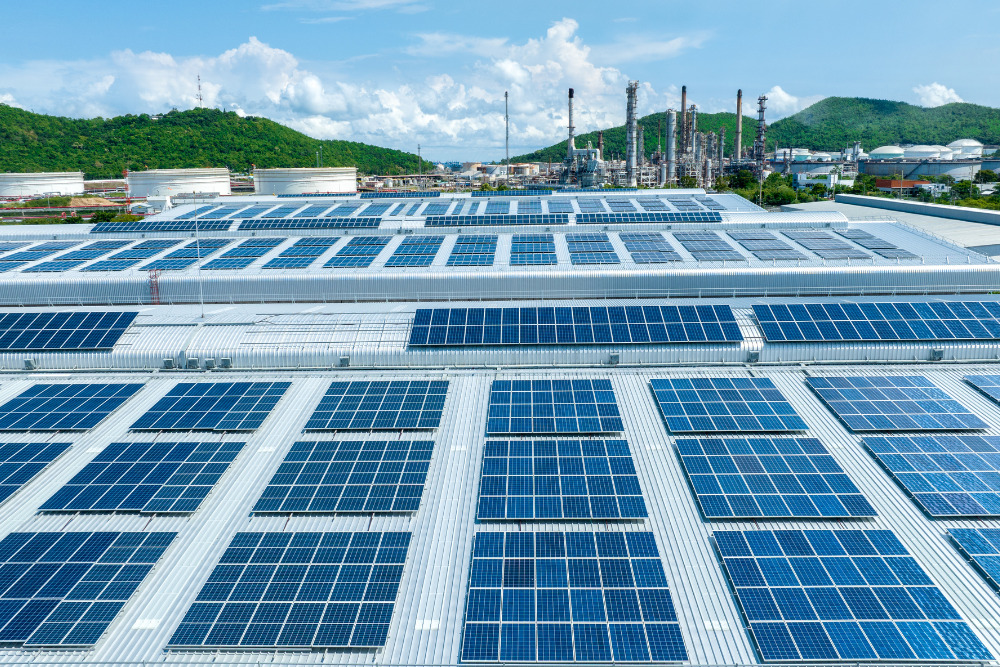The Ultimate Guide To Best Solar Panel Company Virginia
The Ultimate Guide To Best Solar Panel Company Virginia
Blog Article
Energy Storage Installers Virginia: Lumina Solar Concentrates On Supplying Advanced Photovoltaic Solutions For Houses And Companies
History and Establishing
Have you ever questioned how a solar panel business springs from a simple spark of inspiration into a powerhouse of renewable resource? It typically begins with a vision-- one sustained by a mix of development, determination, and a pinch of serendipity. The journey of lots of solar business mirrors the development of the innovation itself: from large, inefficient panels to sleek, high-efficiency marvels harnessing the sun's bounty.
The Early Days
In the late 20th century, when solar power was still a niche principle, leaders planted seeds for what would become a global motion. Think of a little workshop filled with curious engineers, relentlessly explore photovoltaic cells. Their enthusiasm was palpable, typically driven by a desire to fight environment modification and decrease dependence on nonrenewable fuel sources.
One such anecdote is about a creator who, influenced by an outdoor camping trip, understood that even in remote locations, the sun might power essential gadgets. This basic observation triggered a company's mission to equalize access to tidy energy.
Founding Concepts

- Innovation: Continuously pressing the limits of solar technology to enhance efficiency and sturdiness.
- Sustainability: Devoting to environment-friendly manufacturing and lowering carbon footprints.
- Ease of access: Making renewable resource options cost effective and practical for daily users.
Turning points in Development
| Year | Secret Occasion |
|---|---|
| 1985 | Company established in a small garage, concentrating on research study and advancement. |
| 1995 | Business solar panel item released, gaining regional attention. |
| 2005 | Broadened to global markets, embracing worldwide eco-friendly energy goals. |
| 2015 | Introduced innovative photovoltaic panel technology with enhanced energy conversion. |
Isn't it fascinating how these incremental steps, frequently ignored, shape the energy landscape today? The photovoltaic panel company story is not practically technology; it has to do with a ruthless mission for a brighter, cleaner future.

Developments in Photovoltaic Panel Technologies
Ever seen how some photovoltaic panels gleam brighter and last longer? It's not magic; it's the science of photovoltaic effectiveness. Modern solar panel business invest greatly in innovations like bifacial cells, which record sunshine from both sides, boosting energy harvest without broadening roofing system area. Have you ever wondered why some panels carry out better on cloudy days? That's due to advances in thin-film solar technology, which thrives under diffused light conditions.
Item Variations Customized to Distinct Needs
One size never fits all. Solar panel providers now use:
- Monocrystalline panels for maximum performance and sleek aesthetic appeals, ideal for space-constrained roofs.
- Polycrystalline panels, which use a cost-effective alternative without compromising excessive output.
- Building-integrated photovoltaics (BIPV), combining solar tech perfectly into architectural components like windows and exteriors.
Choosing the best item isn't almost in advance expense; it's about matching your environment, energy objectives, and long-lasting cost savings. For example, homes shaded by trees need panels that excel in low-light situations, something lots of ignore until energy costs climb all of a sudden.
Technical Tips for Ideal Selection
- Evaluate the temperature coefficient-- lower worths suggest panels lose less performance on hot days.
- Look for panels with boosted anti-reflective coatings to make the most of light absorption.
- Think about the panel's warranty not just for problems, however for guaranteed power output over decades.
- Do not undervalue the significance of the inverter technology combined with the panels; it can make or break your system's efficiency.
Beyond Panels: Emerging Patterns
Imagine solar panels that change their angle automatically to chase after the sun-- tracking systems are ending up being more accessible, increasing yield substantially. Or solar tiles that blend invisibly into your roofline, transforming your home into a silent, self-sufficient power generator. These developments are improving what a photovoltaic panel company uses-- not simply products, however integrated energy solutions.
Market Existence and Global Operations
Ever wonder why some solar panel business appear to sprout up in every corner of the globe while others hardly make a ripple? The difference lies not simply in innovation but in mastering the art of navigating diverse markets. Expanding internationally resembles planting seeds in various climates-- you must understand each environment's distinct conditions to thrive.
Take, for circumstances, the elaborate dance of logistics and supply chain management. Delivering panels halfway throughout the world isn't practically distance; it has to do with timing, customs, tariffs, and adapting to local demand variations. A business with robust global operations expects these variables, making sure panels show up on schedule without pumping up expenses. This insight is no small accomplishment and typically separates market leaders from fans.
Key Techniques for Expanding Market Presence
- Localized manufacturing: Developing production hubs near target audience lowers shipping delays and import intricacies.
- Strategic collaborations: Teaming up with local firms accelerates market penetration and constructs trust.
- Adaptive product design: Customizing solar panel tech to weather, sun intensity, and infrastructure nuances improves efficiency and acceptance.
What about the human element? Solar panel business operating globally need to reconcile cultural differences and regulative nuances without forgeting their core mission. For instance, what operate in a sun-drenched desert may falter in a damp coastal area. Often, the most innovative option is simply listening-- soaking up regional insights to fine-tune technology and approach.
Professionals often advise a phased rollout rather than a shotgun growth. Why risk overextension when measured development develops sustainable momentum? Scaling sensibly suggests balancing ambition with functional strength - Solar Panel Company. In the race for sustainable energy supremacy, persistence can be as valuable as speed.
Ecological Effect and Sustainability Practices
When solar panels first emerged, lots of presumed they carried zero environmental baggage. The truth is more nuanced. The production of solar batteries involves uncommon earth metals and energy-intensive processes, which can leave a large carbon footprint before the panels even reach roofs. Yet, the real environmental expense depends heavily on the sustainability practices employed by the solar panel business throughout the here lifecycle of their items.
How typically do we stop briefly to consider what happens to solar panels at the end of their helpful life? Unlike batteries or electronics, photovoltaic panels can last 25-30 years, however disposal and recycling pathways stay underdeveloped in numerous regions. A business devoted to lowering ecological harm will have a robust strategy for recycling photovoltaic materials, restoring valuable silicon, glass, and metals to avoid garbage dump build-up.
Key Sustainability Strategies
- Making use of low-impact manufacturing strategies that lessen water and energy usage.
- Carrying out closed-loop systems to recycle production waste back into new panels.
- Participating in transparent supply chain audits to guarantee ethical sourcing of raw products.
- Designing panels for much easier disassembly to assist future recycling efforts.
It deserves keeping in mind that some solar business have actually pioneered ingenious methods, such as incorporating eco-friendly elements or utilizing less harmful chemicals during fabrication. This not just lowers environmental stress but also sets a precedent for the market. The question remains: can the solar industry really pivot towards a circular economy design without compromising effectiveness or affordability?
Specialist Tips for Examining Sustainability
- Inquire about the company's dedication to carbon-neutral manufacturing and whether they balance out emissions.
- Examine if they partner with accredited recycling centers devoted to solar panel waste.
- Search for openness reports detailing environmental effects and sustainability objectives.
- Consider the longevity and service warranty of panels as an indirect step of resource effectiveness.
In the end, going with solar energy must suggest more than just slashing electrical energy expenses; it's about supporting a future where energy is gathered responsibly and waste is thoughtfully managed. Solar panel companies that embrace this viewpoint not only light up homes but also cast a brighter light on sustainable innovation.
Report this page